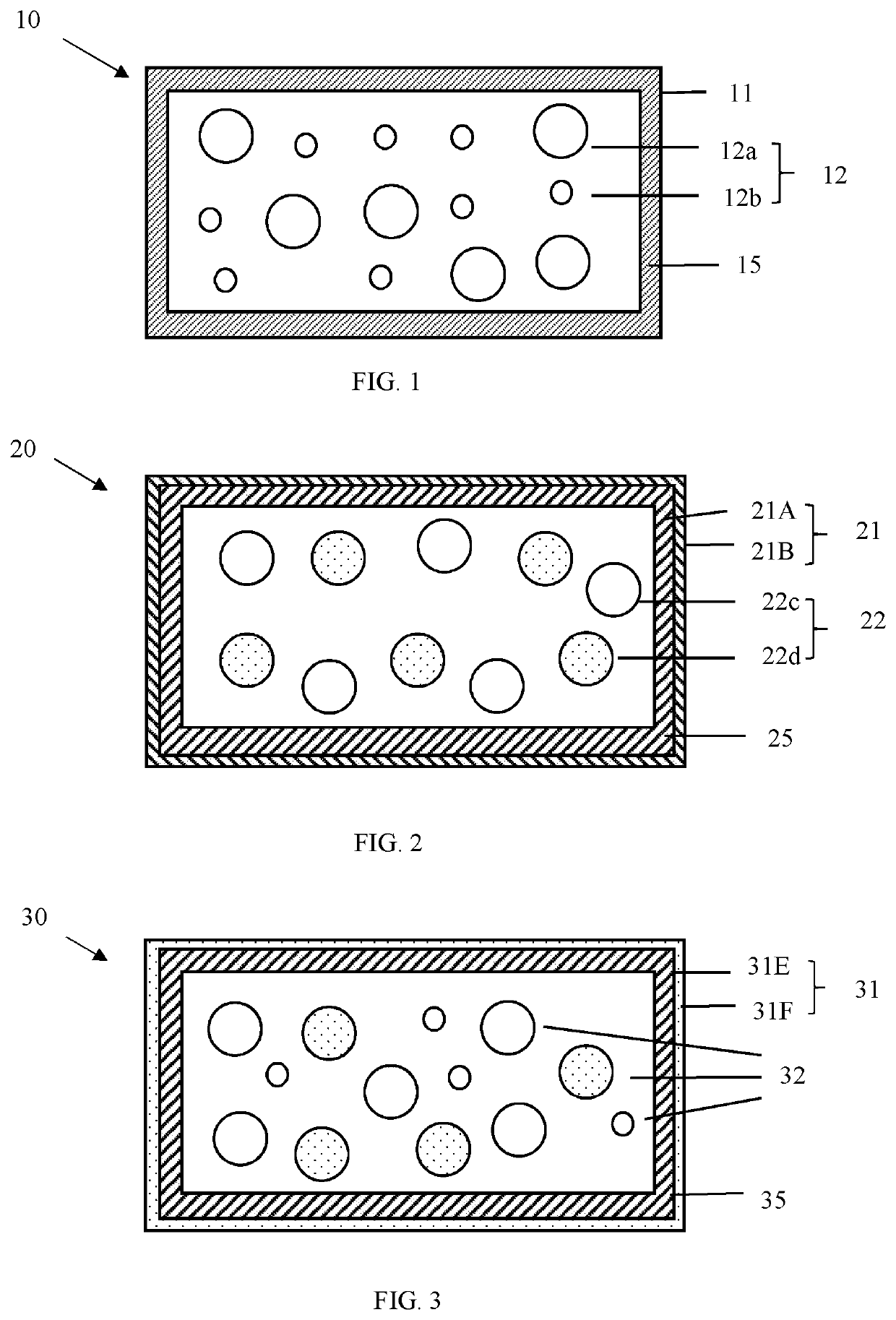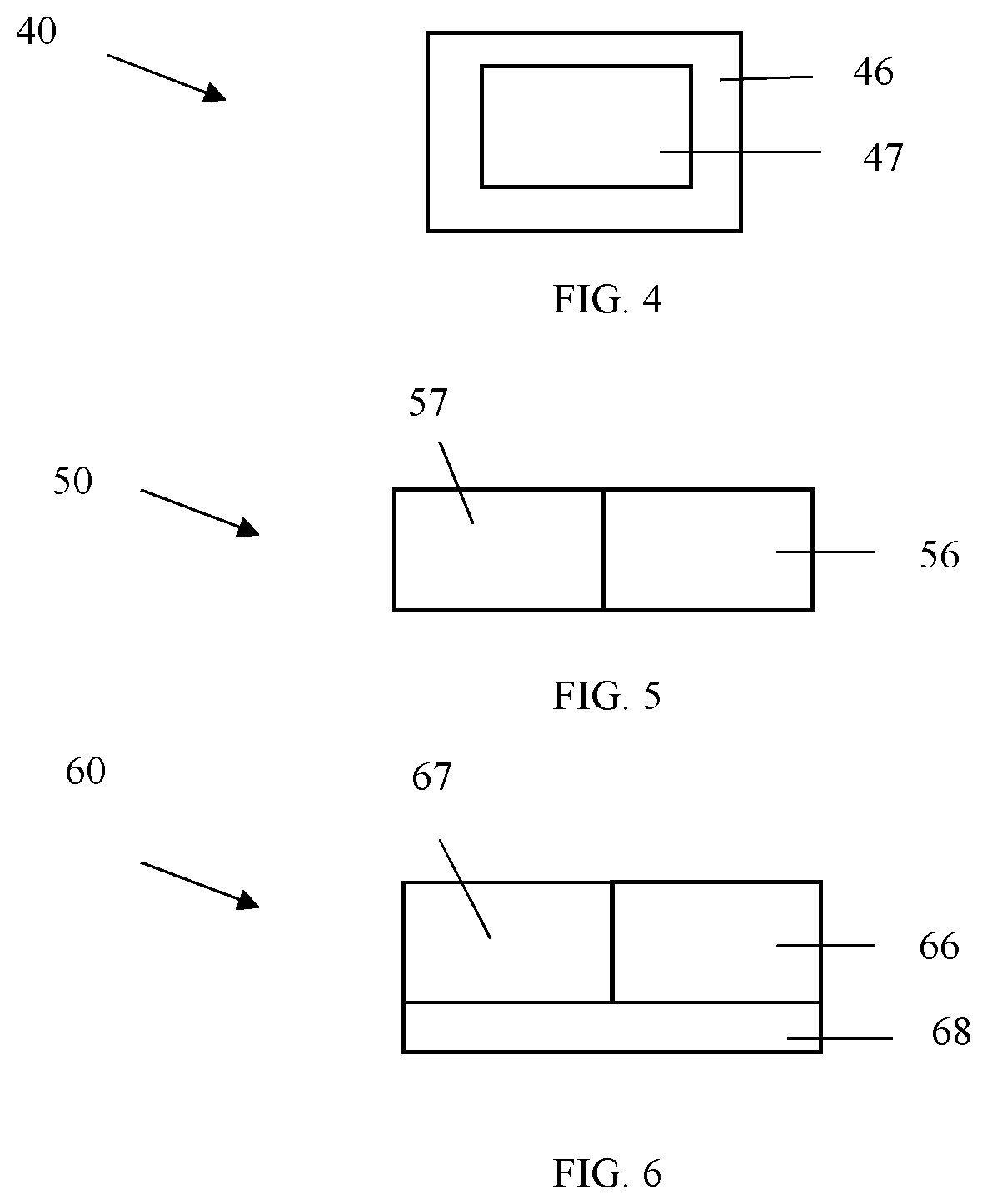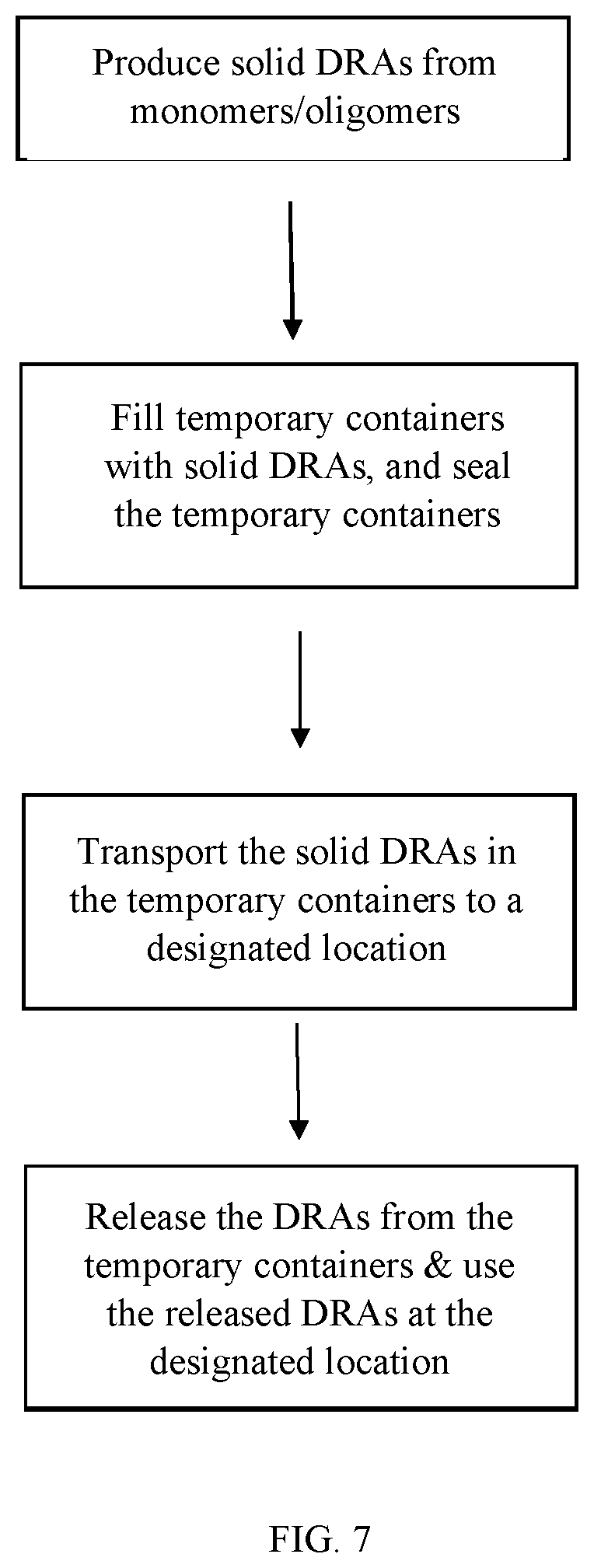Drag reducing agents
a technology of drag reduction and reducing agent, which is applied in the direction of thickeners, mechanical equipment, hydrocarbon oil treatment products, etc., can solve the problems of increasing shipping costs, not directly adding to or improving drag reduction performance, and achieve the effect of reducing the flow resistance of fluids
- Summary
- Abstract
- Description
- Claims
- Application Information
AI Technical Summary
Benefits of technology
Problems solved by technology
Method used
Image
Examples
example 1
[0055]Drag reducing agents having a core containing free-flowing polyolefin particles with different particle size distributions are provided. The drag reducing agents have a low density polyethylene container and a core containing 20-60 wt % of ultrahigh molecular weight polyolefin particles with a particle size of 50-200 microns and 80-40 wt % of ultrahigh molecular weight polyolefin particles with a particle size of 200-1,000 microns. The ultrahigh molecular weight polyolefin is made from a bulk polymerization process using a Ziegler-Natta catalyst. After the polymerization, the polymer is ground with a polyethylene waxes with molecular weight 400 to 3000 Daltons under cryogenic grinding conditions. About 20-60 wt % of the polymer is ground for a longer period of time thus producing particles having a particle size of about 50 to 200 microns. About 80-40% of the polymer is ground for a shorter period of time, thus producing particles having a particle size of around 200 to 1,000 ...
example 2
[0056]Drag reducing agents having a core containing free-flowing polyolefin particles with different weight average molecular weights are provided. The drag reducing agents have a low density polyethylene container and a core containing free-flowing ultrahigh molecular weight polyolefin particles made from a bulk polymerization process and ultrahigh molecular weight polyolefin particles made from a precipitation polymerization process. The ultrahigh molecular weight polyolefin made from a bulk polymerization process is ground with a polyethylene waxes with molecular weight 400 to 3000 Daltons under cryogenic grinding conditions. The polyolefin made from bulk polymerization process has a higher molecular weight than the polyolefin made from the precipitation polymerization process. The free-flowing polyolefin particles have a size of about 100 to about 1,000 microns.
[0057]Set forth below are various embodiments of the disclosure.
embodiment 1
[0058]A drag reducing composition comprising: a sealed temporary container; and a drag reducing agent and up to 20 weight percent of a dispersing fluid disposed in the sealed temporary container; wherein the drag reducing agent comprises polyolefin particles having a particle size of about 10 to about 2,000 microns; the dispersing fluid comprising water, an alcohol, hydrocarbon, or a combination comprising at least one of the foregoing; the temporary container comprises a container material, which includes a polyethylene, a polypropylene, an ethylene propylene copolymer, a polystyrene, a polylactic acid, a polyamide, a polyester, a polystyrene, an ethylene vinyl acetate copolymer, an ethylene vinyl alcohol copolymer, a polyvinylpyrrolidone, an ethylene vinylpyrrolidone copolymer, a vinylpyrrolidone vinyl acetate copolymer, a polyvinyl acetate, a polyvinyl alcohol, a polyethylene oxide, a polyethylene glycol, polyvinylidene chloride, a polysaccharide or its derivative, or a combinati...
PUM
| Property | Measurement | Unit |
|---|---|---|
| weight percent | aaaaa | aaaaa |
| particle size | aaaaa | aaaaa |
| particle size | aaaaa | aaaaa |
Abstract
Description
Claims
Application Information
 Login to View More
Login to View More - R&D
- Intellectual Property
- Life Sciences
- Materials
- Tech Scout
- Unparalleled Data Quality
- Higher Quality Content
- 60% Fewer Hallucinations
Browse by: Latest US Patents, China's latest patents, Technical Efficacy Thesaurus, Application Domain, Technology Topic, Popular Technical Reports.
© 2025 PatSnap. All rights reserved.Legal|Privacy policy|Modern Slavery Act Transparency Statement|Sitemap|About US| Contact US: help@patsnap.com



